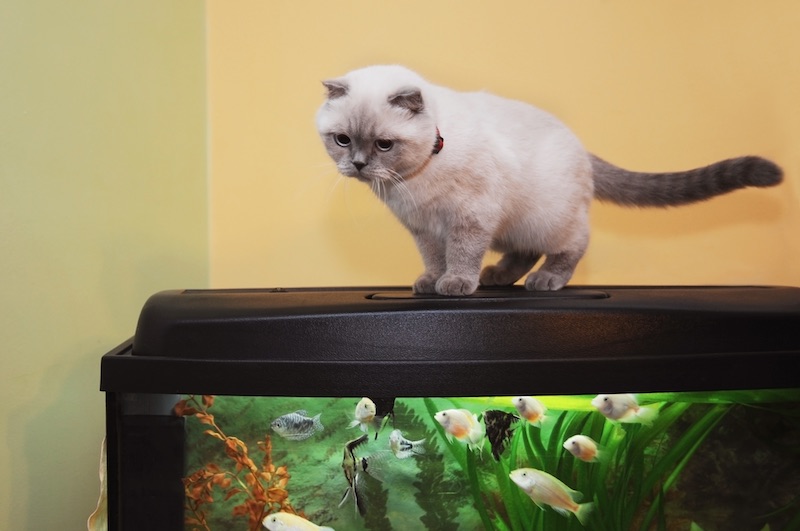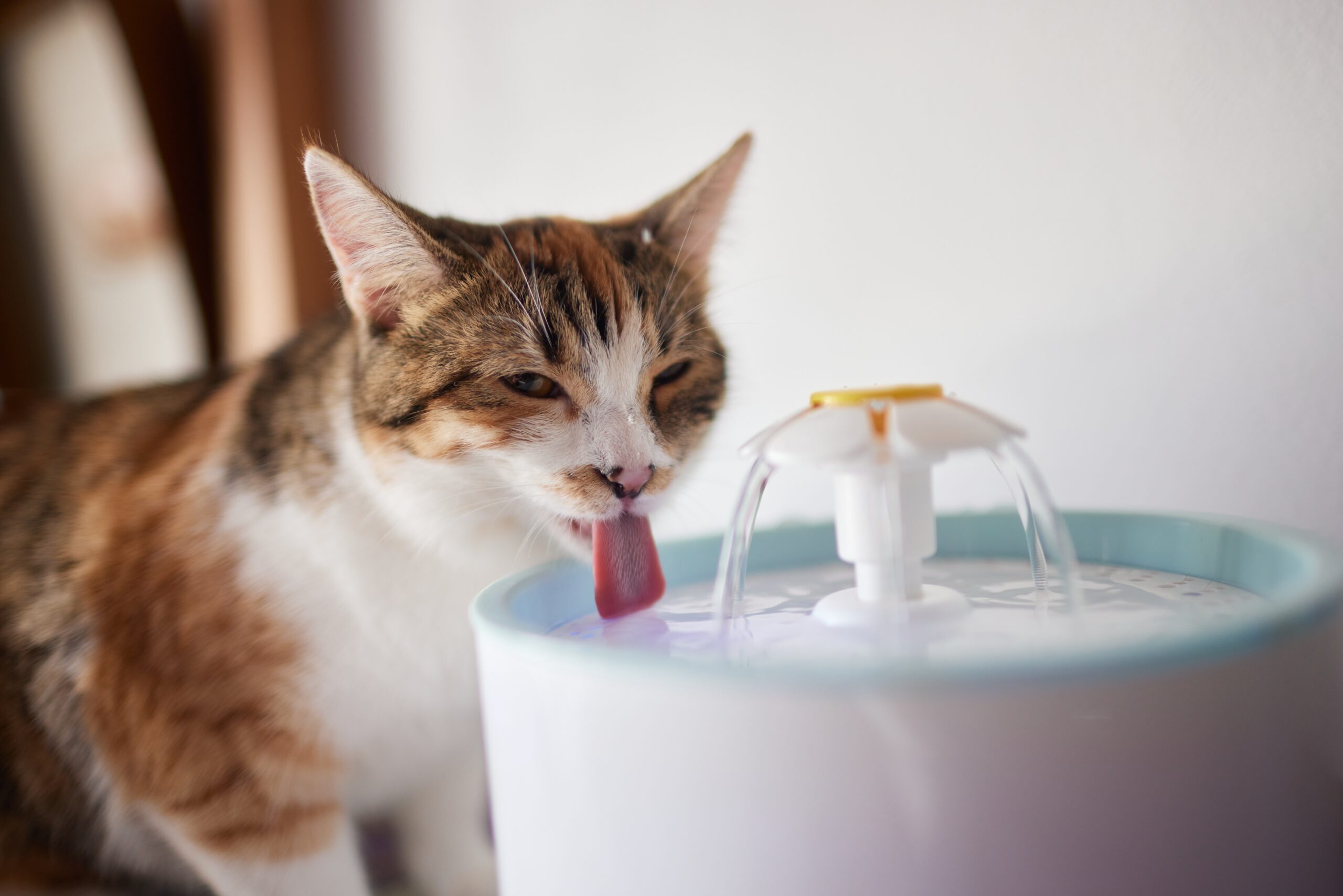How to Cat-Proof Your Fish Tank
Listen up, kitty: Fish are friends, not food.

Listen up, kitty: Fish are friends, not food.

Cats and water don’t typically go together. Throw a fish tank into the mix, and it’s straight-up chaos.
Let’s be honest, cats don’t share the same appreciation for aquarium fish that fish owners do. Their appreciation is more… culinary as opposed to aesthetic.
But you don’t have to choose between your cat and your fish tank. We’ve broken down some tips and tricks for keeping your furry and scaled friends at a safe distance so you can all cohabitate swimmingly.
Fitting a secure lid onto your fish tank is the number one thing you can do to protect your fish from your cat.
On an obvious level, this will prevent your cat from drinking from the tank or plucking your fish out like it’s grazing at a seafood bar. It will also prevent your fish from jumping out of the tank—and your cat from jumping into it.
A well-crafted, well-fit glass or acrylic lid will also reduce the amounts of sounds and smells coming from the tank, which should reduce your cat’s interest in interacting with it in the first place.

Alternatively, you can also fit a stretch of wire mesh over the top of the tank, if a proper lid isn’t available.This doesn’t solve the sound or smell issues, but it may be less comfortable for your cat to lay on, as they sometimes like to do.
Having a feline sprawled out atop their tank can stress out your fish. Try safely stacking things on top of your tank, or investing in a dedicated cat deterrent (detailed below), should discourage your cat from setting up shop on top of the fish tank.
A lot of people think letting their cat watch their fish tank is harmless—it gives the kitty a bit of free entertainment without upsetting your fish. But this behavior should actually be discouraged, and here’s why.
Your cat’s watchful eyes can stress out your fish if your cat watches from up close, and it also encourages your cat’s interest in the fish tank, which may lead to them interfering more actively with it.
Place your tank in such a way that it’s difficult for your cat to get to the right level to watch it. Moving or removing other furniture in the vicinity of the tank stand will likely decrease your cat’s interest in it.
If your cat is intent on watching your goldfish or aquarium plants swaying in the water, you can cover your aquarium with a blanket or sheet when you aren’t home to block their view. When you are home, discourage this behavior with a spray bottle until they eventually stop the behavior altogether.
While you’ll be denying your cat the pleasures of “aquatic cinema,” there are plenty of interactive toys you can purchase to engage their attention without endangering your fish.
As we mentioned, even seemingly benign interactions between your cat and your fish tank can stress out your fish, and lead to further problems with your cat and your tank.
Luckily, there are a wide variety of deterrents available to discourage your cat from having anything to do with your fish tank or bowl. Consider placing electric scat mats, spiky cat deterrent mats, double-sided tape, or aluminum foil on the tank lid, tank stand, and other nearby surfaces to keep the cat off of them.
In addition, citrus scents like lemon, orange, or grapefruit are all unpleasant to cats and may keep them away.
Cats love to bat and tug at anything dangling over their head: a piece of string, a tablecloth, an electrical cord. This is very cute… until they tug your filter cord too hard and pull the entire fish tank down on top of them. Yikes, smash, disaster.
To prevent this worst-case scenario, tidy any electrical cords around your fish tank by taping them up or curling them up on the table so your cat can’t reach them. If you have a tablecloth or other cover on your tank stand, tape the edges to the bottom of the table so they don’t hang down.
This one may seem odd, but if your cat is mostly interested in drinking from the fishbowl, a new water bowl might solve your problem.
Even if you have a freshwater tank, chemicals and waste make it unsafe for your cat to drink from the tank; it will also stress out your fish quite a bit. However, like humans, cats have a natural fascination with running water; they have an evolutionary bias to think of it as cleaner and safer to drink than still or stagnant water.
If your tank has a pump or aerator filtration system, your cat might find the tank more appealing than a regular water bowl. A fountain water bowl, which keeps their water moving, might hold their attention better and help them stay hydrated without disturbing your fish or your fish tank.

Lemonade Pet insurance isn’t available for fish (or ferrets, or farm animals), but it can cover your cat against various illnesses and accidents. Click below to get your feline’s quote today—it’s easy, we promise.
Please note: Lemonade articles and other editorial content are meant for educational purposes only, and should not be relied upon instead of professional legal, insurance or financial advice. The content of these educational articles does not alter the terms, conditions, exclusions, or limitations of policies issued by Lemonade, which differ according to your state of residence. While we regularly review previously published content to ensure it is accurate and up-to-date, there may be instances in which legal conditions or policy details have changed since publication. Any hypothetical examples used in Lemonade editorial content are purely expositional. Hypothetical examples do not alter or bind Lemonade to any application of your insurance policy to the particular facts and circumstances of any actual claim.